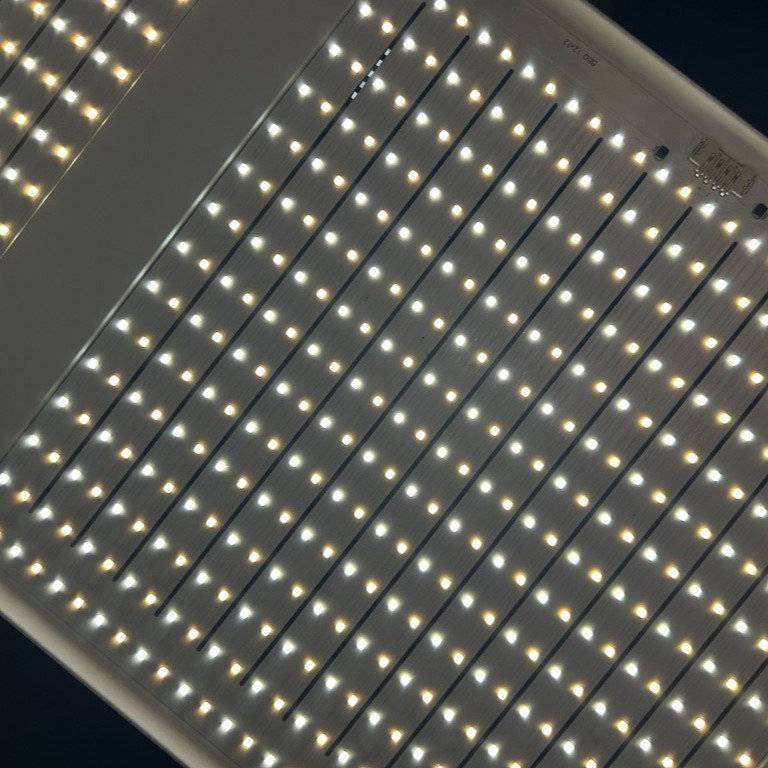
For eons, sunlight reigned supreme as the conductor of Earth’s verdant symphony, orchestrating plant growth with its vibrant tapestry of wavelengths. But within the realm of human ingenuity, a new maestro emerges – LED horticulture lighting, wielding not a fiery baton, but a palette of precisely tuned spectral wavelengths. This is the story of how advanced LED technology, empowered by spectral tuning, transforms not just how we grow plants, but redefines our understanding of the intricate tango between light and life.
Early Melodies: From Monochromatic Flickers to a Duet of Red and Blue
The first notes of this luminous composition resonated in the 1960s with the humble red LED. While a mere echo of the sun’s rich symphony, these rudimentary lights sparked a revolution. Scientists, enthralled by the potential of manipulating light for plant growth, embarked on a quest to decipher the language of photosynthesis. They discovered that chlorophyll, the plant pigment responsible for capturing sunlight’s energy, responded enthusiastically to specific wavelengths, particularly red and blue.
This groundbreaking revelation birthed the first true duets in the LED orchestra – red and blue LED combinations mimicking a semblance of sunlight. The results were transformative. Plant growth flourished under this tailored illumination, yielding significant increases in productivity and efficiency.
Building a Symphony: The Rise of Multi-Channel Arrays and Spectral Tuning
As LED technology matured, so did our understanding of plant-light interactions. Researchers unraveled the secrets of a diverse cast of photoreceptors within plant cells, each attuned to different colors of the spectrum. Red and blue, the foundational melody, remained crucial, but green, far-red, and even invisible ultraviolet wavelengths emerged as vital supporting voices in the photosynthetic chorus.
This newfound knowledge gave birth to multi-channel LED arrays, sophisticated instruments capable of delivering highly customizable light recipes. Imagine, if you will, a conductor wielding a console studded with colorful knobs, each controlling a specific wavelength of light. With a deft touch, they can craft a bespoke symphony for any plant, from the leafy sonata of a lettuce to the vibrant aria of a tomato.
A Chorus of Benefits: Why Spectral Tuning Matters
The advantages of spectral tuning resonate like a harmonious chorus:
- Faster Growth and Increased Yields: Precisely targeted light fuels plant growth, leading to bountiful harvests in shorter timeframes, ideal for commercial horticulture operations.
- Enhanced Quality and Potency: From the sweetness of fruits to the potency of medicinal herbs, spectral tuning can fine-tune the flavor, aroma, and nutritional content of plants, catering to specific consumer demands.
- Energy Efficiency Unleashed: LEDs are inherently energy-saving, and spectral tuning optimizes this advantage by delivering only the wavelengths plants need, minimizing wasted light and reducing energy costs for growers.
- Year-Round Cultivation Symphony: Controlled environments equipped with spectrally tuned LEDs liberate growers from the constraints of seasons and weather, enabling year-round production, offering greater market flexibility and supply chain stability.
- Sustainable Harmony with Nature: By optimizing light and water usage, spectral tuning fosters sustainable agricultural practices, minimizing resource consumption and environmental footprint, aligning with industry-wide sustainability goals.
The Future Unfurls: A Glimmering Horizon
The vibrant score of LED technology and spectral tuning is far from complete. Researchers continue to explore new frontiers, pushing the boundaries of what’s possible:
- Dynamic Spectral Tuning: Imagine light recipes that adapt in real-time, adjusting to a plant’s changing needs and the environment’s fluctuations, maximizing resource utilization and growth potential.
- Hyper-specific Spectral Recipes: The quest for the perfect light blend continues, with scientists tailoring illumination to the unique requirements of each plant variety and growth stage, further optimizing production processes and product quality.
- Integration with Artificial Intelligence: By harnessing the power of AI to monitor plant health and environmental conditions, growers can fine-tune light recipes with unprecedented precision, ushering in an era of data-driven horticulture.
As we delve deeper into the secrets of the plant/light interaction, the future of agriculture shimmers with the promise of abundance, sustainability, and a profound respect for the delicate balance between humanity and the natural world. While the sun may remain the original composer of life’s grand symphony, LED technology, with its masterful spectral tuning, is writing a captivating new movement, one that promises to nourish not only our bodies, but also our understanding of the intricate beauty of the living world.
